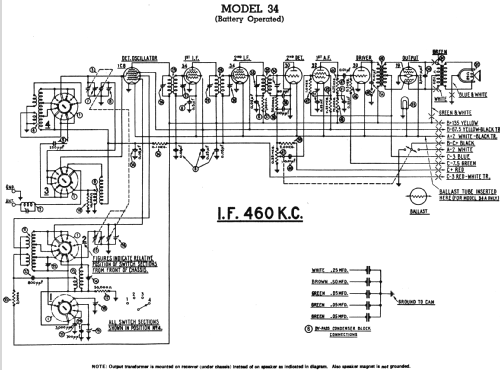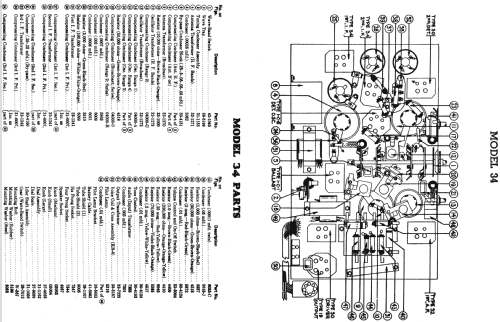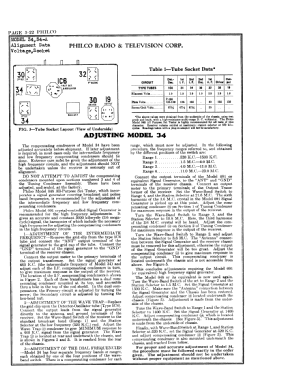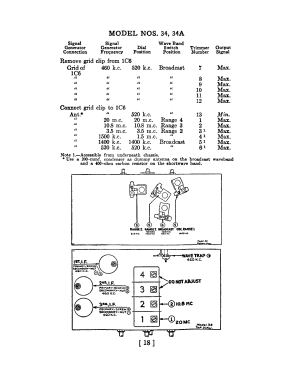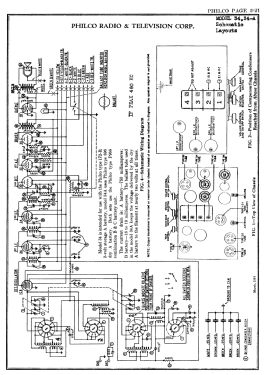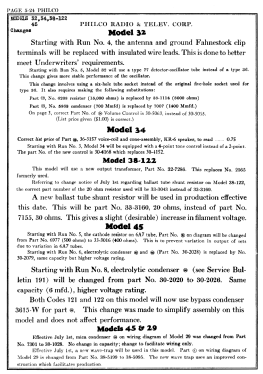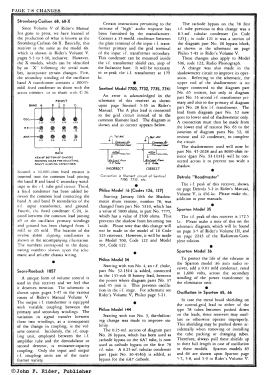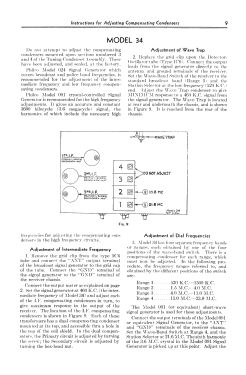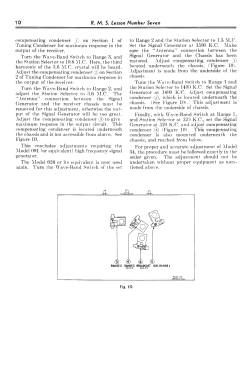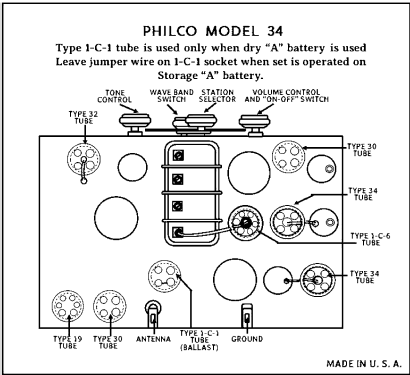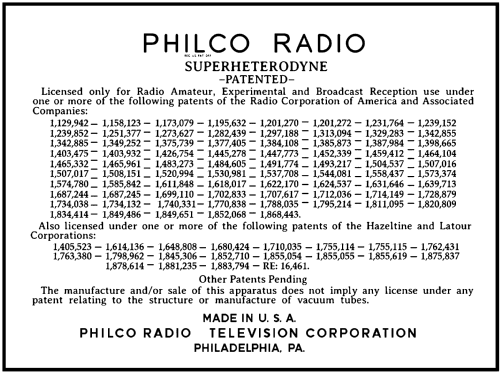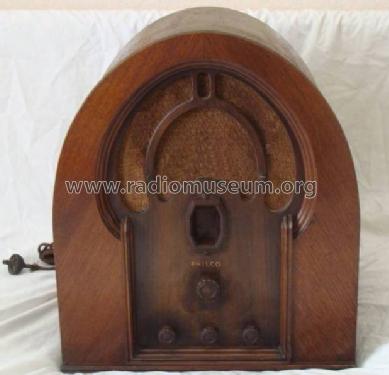34B (34, 34A) Early
Philco, Philadelphia Stg. Batt. Co.; USA
- País
- Estados Unidos
- Fabricante / Marca
- Philco, Philadelphia Stg. Batt. Co.; USA
- Año
- 1934/1934
- Categoría
- Radio - o Sintonizador pasado WW2
- Radiomuseum.org ID
- 135777
Haga clic en la miniatura esquemática para solicitarlo como documento gratuito.
- Numero de valvulas
- 7
- Principio principal
- Superheterodino en general; ZF/IF 460 kHz; 3 Etapas de AF
- Gama de ondas
- OM y más de dos OC
- Tensión de funcionamiento
- Baterías recargables o pilas / 135 & 67.5 & 2 & -3 & -7.5 Volt
- Altavoz
- Altavoz dinámico (de imán permanente)
- Material
- Madera
- de Radiomuseum.org
- Modelo: 34B [Early] - Philco, Philadelphia Stg. Batt
- Forma
- Sobremesa tipo Capilla (upright, round top or pinted arch, not rounded edges only).
- Anotaciones
- Philco's model 34 series used a 4-band (BC - 23 MHz) 7-tube chassis powered by batteries. The standard model 34 chassis used a 2 volt A supply from a storage battery, while the 34A chassis was designed for dry battery A supply and had an extra ballast tube in series with the A supply, presumably to lower the A supply from 3 to 2 volts. Both types of chassis used two separate -3 V C batteries, one with a connection common to the other batteries, and one independent.
There were three versions of the model 34B table radio. The early version (1934) used the flat-front version of one of Philco's classic cathedral cabinet designs with spade-shaped speaker opening. The middle version (1934) used a different cathedral cabinet with a scalloped top. The late version (1935) was a shouldered tombstone with a lyre-shaped speaker opening with three vertical bars through the center.
There were two versions of the 32L lowboy - an early version (1934)with four mostly-vertical bars through the speaker opening, and a late version (1934-35) with nested V- and W-bar patterns through the speaker opening.
- Referencia esquema
- Rider's Perpetual, Volume 5 = ca. 1934 and before
- Mencionado en
- Philco Radio 1928-1942
- Documentación / Esquemas (1)
- Philco 1928-36 Wiring Diagrams, Parts Lists, and Essential Service Data
- Autor
- Modelo creado por Thomas Albrecht. Ver en "Modificar Ficha" los participantes posteriores.
- Otros modelos
-
Donde encontrará 4120 modelos, 2227 con imágenes y 3768 con esquemas.
Ir al listado general de Philco, Philadelphia Stg. Batt. Co.; USA
